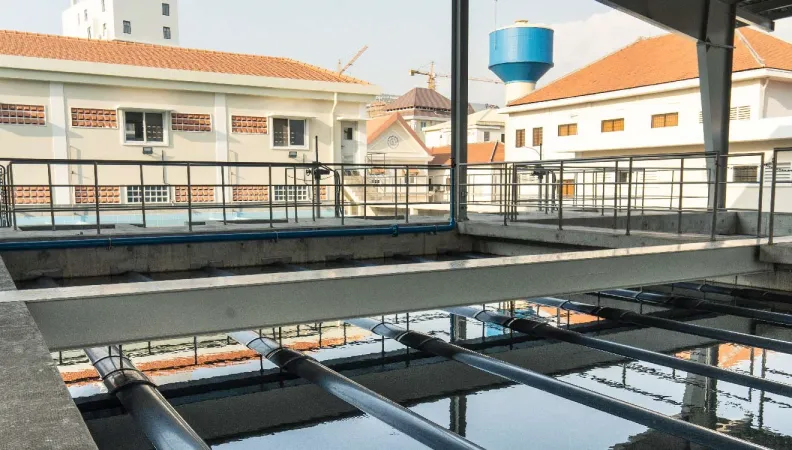Share the page
Phnom Penh: Upgrading a major water treatment plant
Published on

Located in the heart of Phnom Penh, the Chamcar Morn water treatment plant plays a strategic role in supplying water to the city’s residents. After several months of work on its improvement and expansion, the plant is now back in service, and not a moment too soon.
Phnom Penh, the capital city of the Kingdom of Cambodia has undergone sustained urban development for the past two decades. Its population has more than doubled from 1 to 2.3 million, and its surface area has expanded considerably. And while the number of people connected to the city’s drinking water network is the highest in the country at a rate of 85%, big gaps remain between the central districts and the outlying areas, which are not yet all connected.
The Chamcar Mon water treatment plant was built in the 1960s and renovated in 1996. The Phnom Penh Water Supply Authority (PPWSA) made upgrading it a top priority in its 2016-2030 strategy. Thanks to the upgrade, the plant’s production has increased from 14,000 to 52,000 cubic meters of water a day. As a result, 332,000 people are now connected to the service and can enjoy good-quality water in sufficient quantity – and at a more affordable price.
“Prior to the upgrading, the surrounding neighborhoods often suffered water cuts, and the water pressure was insufficient to supply the entire population continuously,” says Pheng Ty, Director of Production and Distribution at PPWSA. “Today, the quality of service is much better, and we can provide water 24 hours a day.”
A service accessible to all
The fully renewed Chamcar Mon plant came into service on October 28, 2019, after technically difficult work was carried out in the heart of the city. It is now optimized for maximum efficiency, with performance in line with international standards. “We control everything by computer, from the data control room. We can check the water pressure, the chlorine level, the temperature,” says Sak Koy, the plant’s director. “That way we can take swift action if anything goes wrong.”
In addition, a laboratory equipped with state-of-the-art equipment conducts additional tests on water quality.
A special feature of the PPWSA model is the facility’s improved efficiency, which helps keep prices very low. The leakage rate is low (on average 8%), thanks to constant monitoring of pressure levels and water flows in the city, via software and a hotline. Once reported, visible leaks are repaired within three hours, while invisible leaks are identified by night shifts using stethoscopes. This method limits fee increases while enabling profitability.
These cost savings allow the PPWSA to help those in need. “We subsidize connections for the poorest households. In short, we supply drinking water in their homes for free or at a reduced cost,” adds Pheng Ty.
A first step... on the way to something bigger
While the plant’s renovation has resulted in a considerable increase in water distribution, further steps must be taken to meet the challenges stemming from the city’s continuing growth.
Another water treatment plant is currently being built in Bakheng. It’s a PPWSA project, financed by AFD, the European Union via the Asian Investment Facility (EU/AIF), and the European Investment Bank (EIB). It will provide an additional 600,000 people with drinking water by 2025, making it the largest plant in the city.
AFD has been supporting PPWSA since 2002 and has financed various projects, with a total commitment of €320 million. Its goal is to improve and increase PPWSA’s distribution capacity in order to expand access to water for the rising number of Phnom Penh residents, and to ensure that this innovative model remains sustainable.
